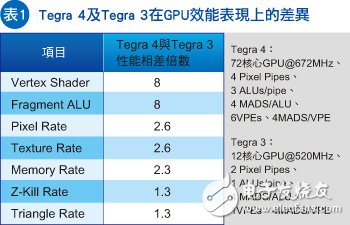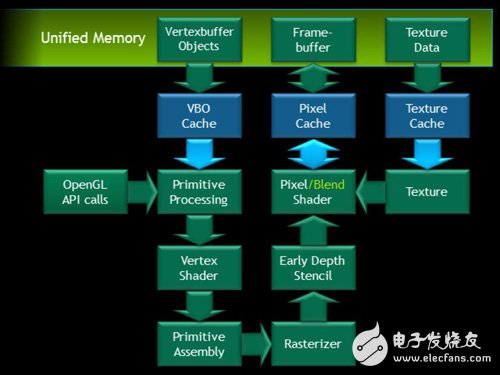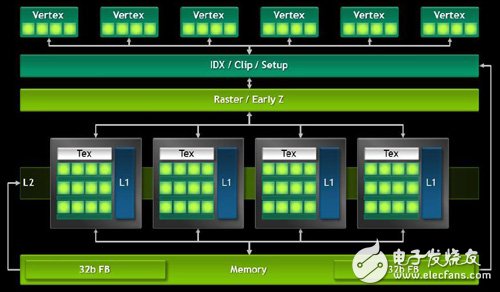High-end mobile devices are increasingly demanding visual experiences such as multimedia, prompting mobile processor developers to integrate more GPU cores, and to use parallel computing capabilities to spread CPU computing burden and enhance graphics and visual performance. In the global consumer market, smart phones and tablet devices are undoubtedly the hottest products. According to the latest forecast released by Gartner, mobile phone shipments in 2013 will exceed 1.8 billion, up 3.7 from 2012. %; tablet shipments will be 184 million units, up 42.7%, showing a rapid growth. It is especially worth noting that high-end mobile device products are constantly being introduced, and the visual application experience for users is close to personal computer (PC) and TV level, providing rich and smooth two-dimensional (2D) or three-dimensional (3D) use. Graphical interface (GUI), ReTIna-level high-definition, fast web rendering and photography, and more realistic 3D games. To achieve these experiences on a small mobile device, the design threshold has become higher and higher for developers. Take 3D games as an example. To achieve the same gaming experience as PCs and TVs, the visual effects that need to be enhanced include physical performance, dynamic lighting, high dynamic range material (HDR Texture), advanced shadow effects, geometric details, and time. Subsurface Scattering, Dynamic ReflecTIon, etc. Fortunately, the most critical mobile processor architecture is constantly being upgraded. In addition to the heterogeneous multi-core architecture that integrates the central processing unit (CPU) and graphics processing unit (GPU), the number of GPUs and processing power are also greatly improved, making it smooth. The biggest hero of the long-term visual experience. The following will analyze the architectural changes and latest developments of advanced GPUs. Achieve more cool graphics, heterogeneous multi-core SoC is not suitable More and more mid-to-high-end mobile devices are equipped with quad-core CPU mobile processors. In the case of NVIDIA's Tegra series, since Tegra 3, it has entered the 4+1 multi-core architecture, namely four performance cores. Adding a power-saving core, and the latest generation of Tegra 4, also uses a 4+1 multi-core architecture, but the processor core has been upgraded from the previous generation Cortex-A9 to the Cortex-A15; as for the Tegra 4i, the Cortex-A9 is still used. R4) CPU. Although the more CPUs, the higher the processing performance, the more cores mean the difficulty of application writing due to the serial processing characteristics of the CPU. In contrast, the GPU has near-linearity due to its parallel processing characteristics. To increase the efficiency, so the increase in the number of GPUs will increase the benefits, which will be significantly more than the CPU. In this case, integrating the heterogeneous multi-core architecture of CPU and GPU becomes an inevitable trend. And when there are more GPU cores, it also gives developers more space and flexibility to make cooler graphics, more detailed details and more vivid situational shaping, which greatly enhances the visual and gaming experience. Tegra 4's GPU subsystem is a good example. It has increased from the previous generation of 12 GeForce GPU cores to 72, and the six-fold core number has also brought six times the graphics performance of Tegra 3. For differences in GPU performance between Tegra 4 and Tegra 3, please refer to Table 1. In the system configuration, there are so-called Vertex Shaders and Pixel Shaders in the architecture; the former allows engineers to customize the conversion process of vertices in the scene, and the latter is used to control The shading calculation for each pixel on the screen. Taking a closer look, Tegra 4 splits out seventy-two GeForce cores into twenty-four Vertex Shaders and forty-eight Pixel Shaders. Each of the four Vertex Shaders is composed of a Vertex Processing Engine (VPE), so there are six VPEs with 16KB and 96-entry cache memory, which can effectively reduce the need to access data to external chips. At the same clock, the new GeForce core can deliver 1.5 times the performance of Tegra 3, while the number of Vertex Shaders in the previous generation is six times different, and the difference is nine times. In addition, Tegar 4 has a total of four Pixel Fragment Shader Pipelines. Each set of pixel pipelines can be subdivided into three sets of Arithmetic Logic Units (ALUs). Each ALU consists of four GeForce cores (ie Pixel Shader). . In actual operation, the ALU is used as the smallest level unit and is called the MulTI-FuncTIon Unit (MFU). Therefore, Tegar 4 has a total of twelve sets of MFU, MFU executable functions, trigonometric functions, and pairs. Instructions such as number, reciprocal, square root, and MOV (reproduction in combined language) (Figures 1, 2). Figure 1 Tegra4 logic drawing processing pipeline flow chart Figure 2 Tegra 4 GPU architecture block diagram original Air glow vape, many new style ,direct factory wholesale,High quality,new design. Air Glow Blastoff Shenzhen Ousida Technology Co., Ltd , https://www.osdvape.com


popular in many maofferrtket.
offer sample for you check,please contact with me.